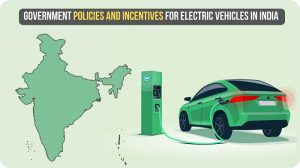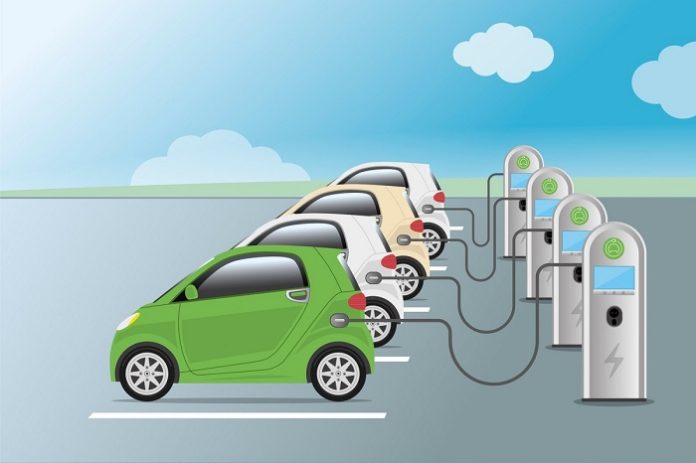India is no stranger to EVs, but at the same time is not as comfortable with them as the world around is. Where do we currently stand?
With the degrading conditions of the environment, and every country coming out with policies and signing agreements to put a stop to this, the global automotive sector is seeing a major rise in e-mobility over the last decade. There is an increase in the ‘concept of EVs’ being turned into ‘production of EVs’.
In 1991, when the LPG, or the liberalization, privatization, and globalization model was introduced as the new economic policy of India, we were opening our doors to new technologies from across the globe. 20 years later, India today is in the forerunning for potential tech investments from across the globe in all major sectors of industries. Among the others, one such industry that has been attracting high investments is our automotive industry.
As the world around us is making a paradigm shift to greener and cleaner vehicles, India still has a lot to catch up to. Are we ready for vehicle electrification? Are the investments enough? Do we have a competent infrastructure? These are the frequent questions that come up in our minds as soon as we hear about EVs. Last year’s data shows that the EV registration in India stood at 0.29% and the reported sales of EV units were over 3000,000 in 2021. The government is enthusiastically ramping up the efforts to make people aware of the benefits of shifting to electric vehicles. The cabinet approved a production-linked incentive scheme for the automotive sector to boost the manufacturing of electric vehicles and hydrogen fuel cell vehicles. The govt is developing a no-money-down electric car purchasing program that lets buyers pay the loan back out of their fossil fuel savings.
The reason to announce such big plans by the government does not come as a surprise because of the rising levels of pollution and the colossal dollars the country has to pay for annual crude oil imports. It is not going to be a cakewalk. The automobile industry is nearing its inflection point. The idea of eliminating conventional and inefficient yet popular Internal Combustion engines has been in talks. Govt support is required both for consumers and manufacturers alike.

The efficiency of the traction motor is about 80% compared to 25% of the Internal Combustion Engine. Add to that the zero emissions and elimination of problems like knocking and ignition lag and EVs are a complete package to vouch for. If India turns electric, it could save 1 Giga tonne of emissions. Compared to the million dollars that India spends on crude oil imports, 80% efficient traction motors look like a sweet deal. Li-ion batteries though expensive would save energy wasted generally on thermal losses in the conventional piston-cylinder arrangement. Another advantage that EVs can have is being technologically advanced with riding modes, rider assist, etc.
The path to vehicle electrification in India though necessary is albeit a long one. Investments need to be made not just in the manufacturing sector, but in the R&D as well. The road to achieving e-mobility is full of hurdles. The biggest being the cost. The EVs use lithium-ion batteries. These batteries make up 70% of the cost of the vehicle. Battery packs that are imported cost a lot and the 28% GST slab makes it worse. The cost surely has gone down in past years but still not to a value where the general public would be capable to opt for EVs. Unlike China, India is short of lithium making the case worse. The fact that batteries have to be replaced in some years is another big hindrance. Focused research on battery sub-components could help find alternatives and/or lower the costs of Li-ion batteries, by producing batteries with different and cheaper alloys and elements to reduce cost. Also, it would be beneficial to promote the manufacture of battery components within the country itself.
The huge charging time is a challenge in time management. And to top, it is the non-availability of charging booths. If one does find a charging booth, there is no guarantee of it having enough power to charge up their vehicle up to the required quantity. Another thing that needs to be considered is that the energy powering these traction motors should come or at least have a considerable share of renewable energy. Because what is the point if we’re burning fossil fuels to counter the burning of fossils. Employment uncertainty is another debatable factor. Current automobile manufacturing has more employment opportunities as compared to the manufacturing of EVs. The mechanics will need to be trained in the advanced mechatronics behind EVs. The skill force required will be automation and robotics oriented.
As quite apparent from the mentioned facts and figures, it is clear that e-mobility is a distant, not impossible dream for the Indian markets. The auto-giants too have to take a step forward and take risks for the change to happen. EVs are going to be not a luxury, but a necessity for survival in the near future. As they are inevitable it is better to plan and organize rather than dodge the change. EVs are still too costly, power outrages too common and charging infrastructure too scarce. There are strengths and weaknesses in every domain which need to be pondered upon and eradicated respectively.








